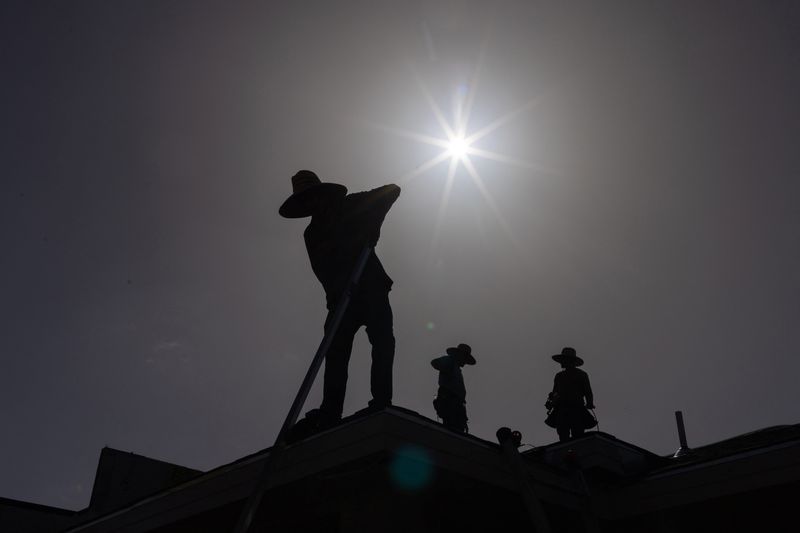By Andrea Shalal and Liliana Salgado
WASHINGTON/PHOENIX (Reuters) -U.S. President Joe Biden took steps to protect workers from extreme heat and met with the mayors of sweltering cities Phoenix and San Antonio on Thursday as an intensifying heat wave put half of Americans under heat watches and warnings.
With this July set to become the hottest on record globally,
temperatures and heat index values across the United States were forecast to soar above 100 degrees Fahrenheit (37.8 Celsius) until at least Saturday, the National Weather Service said.
The growing frequency and intensity of severe weather is symptomatic of global, human-driven climate change that is fueling extremes, experts in the field say, with heat waves in much of the world expected to persist through August.
Biden, a Democrat who has been hemmed in by a Republican congressional majority that downplays or denies human-influenced warming, took further executive action while noting climate emergencies such as costly flooding in Vermont and California, increasingly severe droughts and hurricanes, and Phoenix's record 28 straight days over 110F.
"Ocean temperatures near Miami are like stepping in a hot tub. They just topped 100 degrees - 100 degrees - and they're hitting record highs around the world," Biden told reporters after meeting with Phoenix Mayor Kate Gallego and San Antonio Mayor Ron Nirenberg.
Biden instructed the Department of Labor to ramp up enforcement of on-the-job heat hazards, for example by increasing inspections at construction and agriculture sites, and to issue Hazard Alerts that inform employers of their responsibilities and employees of their rights during extreme heat.
Some 436 workers have died from environmental heat exposure since 2011, according to the Bureau of Labor Statistics, with farmworkers, farmers, firefighters, and construction workers among the most affected.
Overall about 600 Americans die from extreme heat each year, according to the U.S. Centers for Disease and Control.
The federal protections complement local efforts.
Phoenix Mayor Gallego said her city was the first in the nation to have a permanently funded heat office, and was attempting to "out-innovate" climate change. She also urged Congress to expand the definition of a federal emergency to include heat.
While the mayor visited the White House, city officials and non-profit partners back in Phoenix unveiled air-conditioned, solar-powered homes converted from shipping containers on Thursday that they hope can provide relief for the homeless.
Twenty current shelter residents will move into the new units temporarily, while still having access to resources at the center such as restrooms, showers and meals.
"The pavement gets to 180 degrees (82C) sometimes. People come with third degree burns ... It's very debilitating," said Jessica Berg, chief program officer at St. Vincent de Paul, one of the collaborating non-profits along with Steel + Spark.
Meanwhile, officials in other big cities such as New York, Washington and Philadelphia urged people to avoid working or playing outside, to drink plenty of fluids and to check on loved ones and neighbors.
"The next four days will be extremely hot - take care of yourself and the people around you," Washington Mayor Muriel Bowser said on social media. The nation's capital is expected to see the heat index, a measure of what the temperature feels like to the human body, reach 107 degrees F (41.7 C).

In Philadelphia, officials declared a health heat emergency until Saturday and created a phone help line for the elderly, opened cooling centers and increased homeless outreach.
Cooling centers have also been opened across New York City for those who do not have access to air conditioning. The heat index could reach 103 degrees F (39.4 C) on Friday in the most populous U.S. city.
